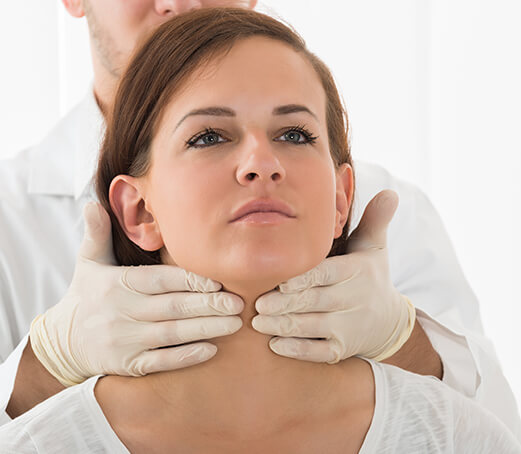
Your thyroid produces thyroid hormone, which controls many activities in your body, including how fast you burn calories and how fast your heart beats. Diseases of the thyroid cause it to make either too much or too little of the hormone. Depending on how much or how little hormone your thyroid makes, you may often feel restless or tired, or you may lose or gain weight. Women are more likely than men to have thyroid diseases, especially right after pregnancy and after menopause.
It can be hard to tell if you have a thyroid disease. The symptoms are the same as many other health problems. Your doctor may start by asking about your health history and if any of your family members has had thyroid disease. Your doctor may also give you a physical exam and check your neck for thyroid nodules.
Depending on your symptoms, your doctor may also do other tests, such as:
- Blood tests. Testing the level of thyroid stimulating hormone (TSH) in your blood can help your doctor figure out if your thyroid is overactive or underactive. TSH tells your thyroid to make thyroid hormones. Depending on the results, your doctor might do another blood test to check levels of one or both thyroid hormones in your blood.
- Radioactive iodine uptake test. For this test, you swallow a liquid or capsule that holds a small dose of radioactive iodine (radioiodine). The radioiodine collects in your thyroid because your thyroid uses iodine to make thyroid hormone.
High levels of radioiodine mean that your thyroid makes too much of the thyroid hormone. Low levels mean that your thyroid does not make enough thyroid hormone.
- Thyroid scan. A thyroid scan uses the same radioiodine dose that was given by mouth for your uptake test. You lie on a table while a special camera makes an image of your thyroid on a computer screen. This test shows the pattern of iodine uptake in the thyroid.Three types of nodules show up in this test:
- “Hot” nodules. These thyroid nodules show up on the scan more brightly than normal thyroid nodules. They take up more radioiodine than the surrounding thyroid. They also make more hormone than normal thyroids. Less than 1% of these nodules are cancerous.11
- “Warm” nodules. These nodules take up the same amount of radioiodine as normal thyroid and make a normal amount of hormones. Only 5% to 8% of these nodules are cancerous.11
- “Cold” nodules. These nodules show up as as dark areas on the scan. They do not take up much radioiodine and do not make thyroid hormones. Many nodules are cold. Up to 15% of these nodules are cancerous.11
- Thyroid ultrasound. The thyroid ultrasound uses sound waves to make a picture of the thyroid on a computer screen. This test can help your doctor tell what type of nodule you have and how large it is. You may need more thyroid ultrasounds over time to see if your nodule is growing or shrinking.
Ultrasound may also be helpful in finding thyroid cancer, although by itself it cannot be used to diagnose thyroid cancer.
- Thyroid fine needle biopsy. This test tells whether thyroid nodules have normal cells in them. Your doctor may numb an area on your neck. Your doctor will then stick a very thin needle into the thyroid to take out some cells and fluid. A doctor will then look at the cells under a microscope to see if they are normal. Cells that are not normal could mean thyroid cancer.
